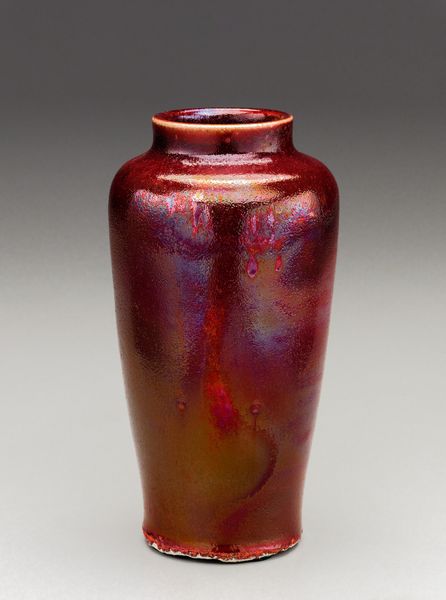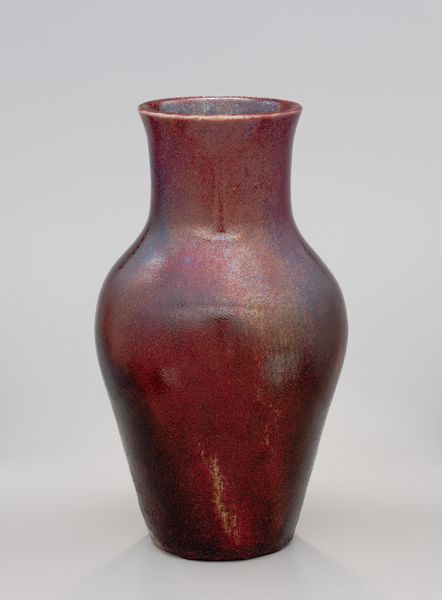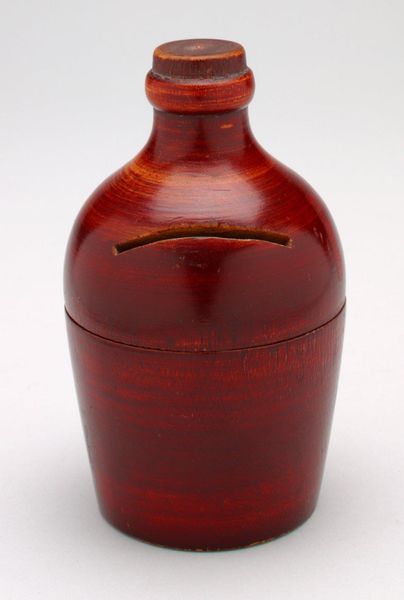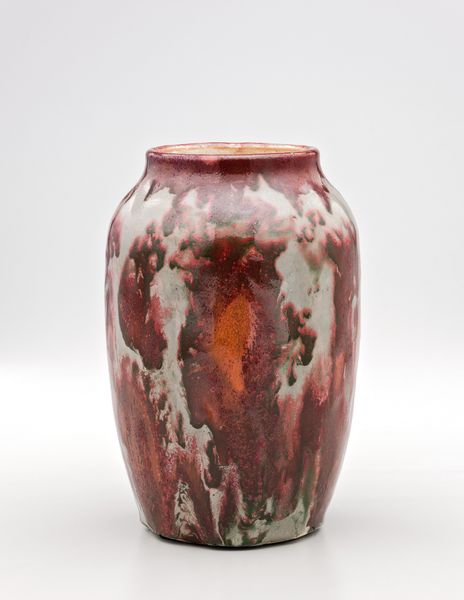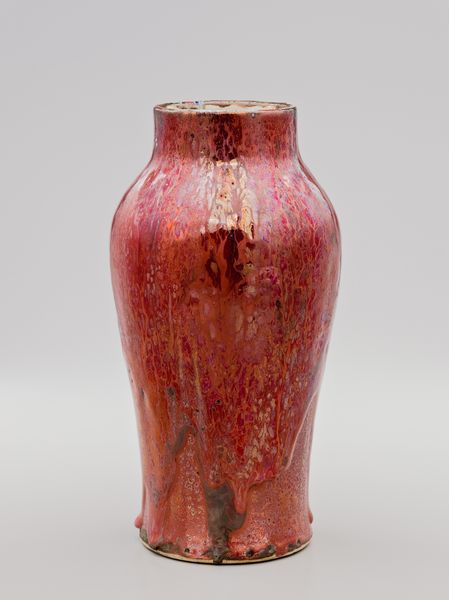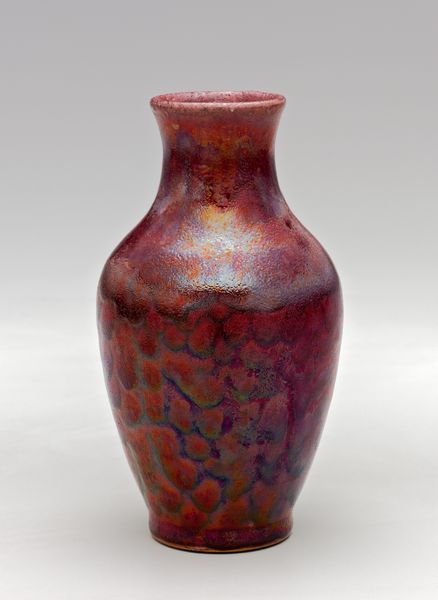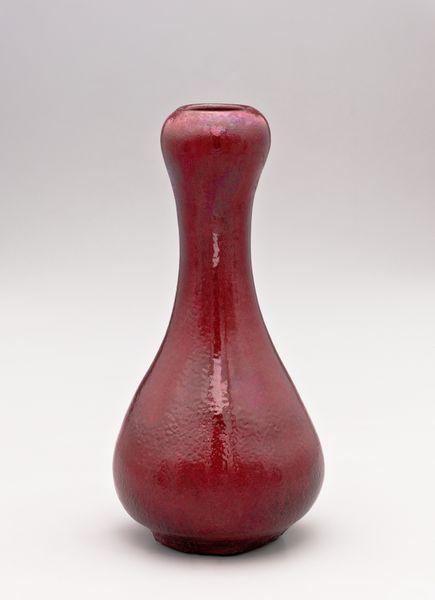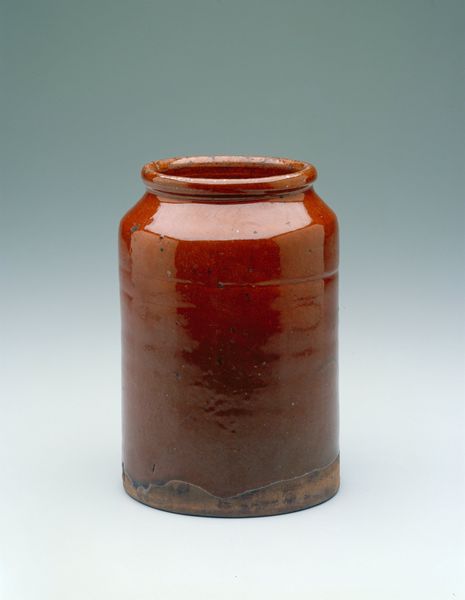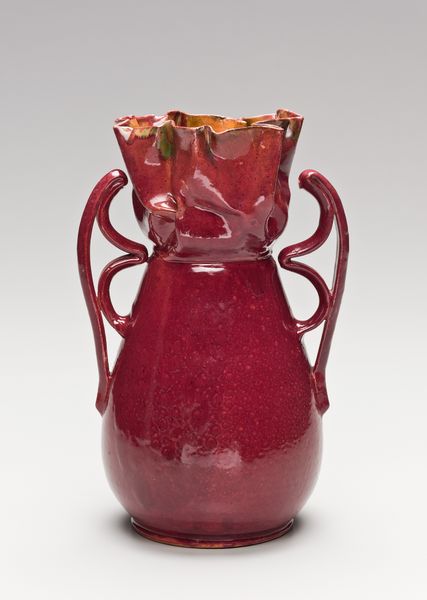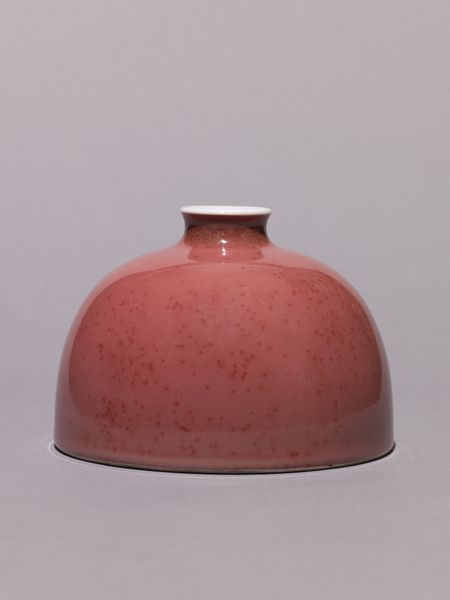
ceramic, earthenware
#
ceramic
#
earthenware
#
stoneware
#
ceramic
#
united-states
#
decorative-art
Dimensions: 8 3/8 x 3 7/16 in. (21.3 x 8.7 cm)
Copyright: Public Domain
Curator: This vibrant piece, simply titled "Vase," was created between 1882 and 1892 by the Chelsea Keramic Art Works. It's currently housed here at the Metropolitan Museum of Art. Editor: Wow, it's got a gorgeous, almost metallic sheen to it. It reminds me of a rich, deep plum, with these shimmering coppery undertones. It’s elegant and surprisingly weighty, I would guess. Curator: Absolutely. The "Vase" is made of earthenware, with some debate about whether stoneware techniques were also involved. Chelsea Keramic Art Works was very invested in exploring new glazing techniques and the ways different firing processes could transform readily available materials. Editor: Interesting. So, considering that period, the late 19th century, what was the cultural status of ceramics in America, and what role would these kind of decorative objects play within middle class homes? Curator: American ceramics was experiencing a boom, in part fuelled by interest from Europe, and from institutions, to educate the American public about quality ceramics. Companies like Chelsea Keramic Art Works, though small in scale, saw the economic value in producing high quality art ceramics, like this vase, making it affordable for a rising middle class. Think of it as art becoming a household commodity. Editor: It seems they definitely nailed that beautiful glazing process you mentioned earlier. Are there any parallels with ceramic practices elsewhere? Curator: Definitely. Chelsea Keramic drew direct inspiration from the aesthetic principles then dominating English art pottery. Think the art-for-arts-sake philosophy of William Morris in particular, and you begin to understand how artistic, hand crafted pieces had tremendous social value at the time. Editor: So the value lies in its handmade nature in a increasingly mechanized world. Curator: Exactly. What makes the piece so captivating is how its very creation is so deeply entwined with questions about industrialization, class, and this push to elevate the status of decorative art, that is frequently side lined. It really does bridge the divide between industry, art and social practice in intriguing ways. Editor: Absolutely. I’ve definitely looked at this piece with fresh eyes today! Curator: And hopefully, our listeners will, too.
Comments
No comments
Be the first to comment and join the conversation on the ultimate creative platform.
